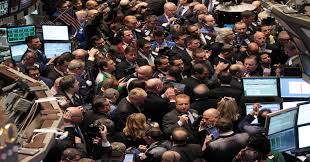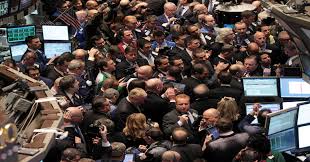
A millennial who had only recently been allowed to set foot on a Wall Street floor, was obviously in deep trouble as he made bad bets and lost $4.9 million in a single afternoon in a panic to recoup his losses.
But this wasn’t the end to his career as he was simply taking part in a real life Wall Street situation simulation created by an MIT finance professor, Andrew Lo. The aim of the experiment is to identify the basis of how top performers respond to market volatility and if they can be identified.
Lo rigged a conference room with monitors to create a lab where 57 stock and bond traders lent their bodies to science in a New York-based global investment bank which he refused to name, in 2014.
To harvest insights from the terabytes of customer information they possess, big-data teams have already been set up by banks. Banks are now trying to find out if they can limit losses in their biggest cost center – employees and whether they can improve operations. Systems that monitor worker emotions to boost performance and compliance is being seriously considered by companies including JPMorgan Chase and Bank of America and are holding discussions with tech companies.
Technology offers a way to even the fight as machines encroach on humans’ role in the markets. Traders could be warned to step away from their desks when their emotions run wild by the devices Lo used—wristwatch sensors that measure pulse and perspiration. What interested the bank that allowed the MIT study was the use of devices that could also be used to screen hires to find those whose physiology is best suited to risk-taking.
Lo says that keeping tabs on employees was the most promising application and the one with the most profound privacy issues. Problems brewing on a specific desk, such as unauthorized trading, could be spotted by risk manager using the devices and take measures before there is too much damage.
“Imagine if all your traders were required to wear wristwatches that monitor their physiology, and you had a dashboard that tells you in real time who is freaking out. The technology exists, as does the motivation—one bad trade can cost $100 million—but you’re talking about a significant privacy intrusion,” Lo says.
A sensor-laden badge that transmits data on speech, activity, and stress patterns has been created by a startup founded by MIT graduates called Humanyze as services that incorporate it into their analysis of behavior are being signed up for by banks. Machine-learning programs to scan employee communications and trading records have been used by another startup, Behavox.
The volunteers in Lo’s study were told to make money in markets including oil, gold, stocks, currencies, and Treasuries with a $3 million risk limit. The volunteers ranged from junior employees to veterans with 15 years of experience and came from across the bank’s fixed-income and equity desks.
Lo says that a signature response to volatility was found in top traders. They are emotional athletes rather than being devoid of feelings. Their bodies relax when calm returns and swiftly respond to stressful situations.
Being hounded by their mistakes and remained emotionally charged were the traits of those who fared less well. This was measured by markers such as cortisol levels and their heart rate.
Lo said that applications designed to boost performance and monitor employees will become commonplace as younger traders accustomed to biometric devices like the Fitbit enter the industry. He expects it to be widespread in less than 10 years.
“The more data we have, the more we’re able to characterize the emotional state of the individual. Everybody will have to have these kinds of analytics,” he says.
(Source:www.bloomberg.com)
But this wasn’t the end to his career as he was simply taking part in a real life Wall Street situation simulation created by an MIT finance professor, Andrew Lo. The aim of the experiment is to identify the basis of how top performers respond to market volatility and if they can be identified.
Lo rigged a conference room with monitors to create a lab where 57 stock and bond traders lent their bodies to science in a New York-based global investment bank which he refused to name, in 2014.
To harvest insights from the terabytes of customer information they possess, big-data teams have already been set up by banks. Banks are now trying to find out if they can limit losses in their biggest cost center – employees and whether they can improve operations. Systems that monitor worker emotions to boost performance and compliance is being seriously considered by companies including JPMorgan Chase and Bank of America and are holding discussions with tech companies.
Technology offers a way to even the fight as machines encroach on humans’ role in the markets. Traders could be warned to step away from their desks when their emotions run wild by the devices Lo used—wristwatch sensors that measure pulse and perspiration. What interested the bank that allowed the MIT study was the use of devices that could also be used to screen hires to find those whose physiology is best suited to risk-taking.
Lo says that keeping tabs on employees was the most promising application and the one with the most profound privacy issues. Problems brewing on a specific desk, such as unauthorized trading, could be spotted by risk manager using the devices and take measures before there is too much damage.
“Imagine if all your traders were required to wear wristwatches that monitor their physiology, and you had a dashboard that tells you in real time who is freaking out. The technology exists, as does the motivation—one bad trade can cost $100 million—but you’re talking about a significant privacy intrusion,” Lo says.
A sensor-laden badge that transmits data on speech, activity, and stress patterns has been created by a startup founded by MIT graduates called Humanyze as services that incorporate it into their analysis of behavior are being signed up for by banks. Machine-learning programs to scan employee communications and trading records have been used by another startup, Behavox.
The volunteers in Lo’s study were told to make money in markets including oil, gold, stocks, currencies, and Treasuries with a $3 million risk limit. The volunteers ranged from junior employees to veterans with 15 years of experience and came from across the bank’s fixed-income and equity desks.
Lo says that a signature response to volatility was found in top traders. They are emotional athletes rather than being devoid of feelings. Their bodies relax when calm returns and swiftly respond to stressful situations.
Being hounded by their mistakes and remained emotionally charged were the traits of those who fared less well. This was measured by markers such as cortisol levels and their heart rate.
Lo said that applications designed to boost performance and monitor employees will become commonplace as younger traders accustomed to biometric devices like the Fitbit enter the industry. He expects it to be widespread in less than 10 years.
“The more data we have, the more we’re able to characterize the emotional state of the individual. Everybody will have to have these kinds of analytics,” he says.
(Source:www.bloomberg.com)














